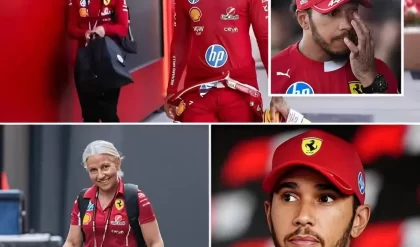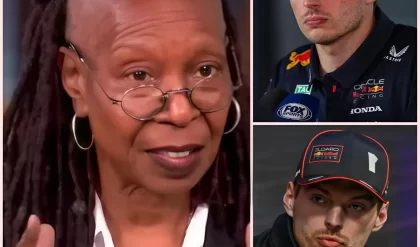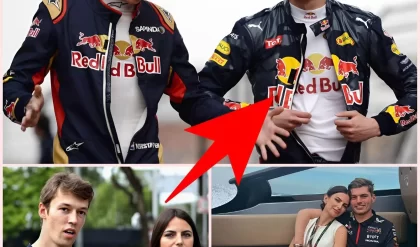Max Verstappen Slams Monaco Grand Prix as F1’s Two-Stop Rule Flops, Prompting Calls for Radical Circuit Changes

The 2025 Monaco Grand Prix, held on May 25, promised a thrilling shake-up with the FIA’s mandatory two-stop rule, but it delivered yet another processional race, leaving drivers, teams, and fans frustrated. Max Verstappen’s scathing assessment—that modern Formula 1 cars can “just pass a Formula 2 car” around Monte Carlo—underscored the circuit’s overtaking woes, while Mercedes team principal Toto Wolff proposed Monaco-specific regulations to curb tactical manipulation. As Lando Norris cruised to a McLaren victory, the race exposed deep-rooted issues with the iconic track’s layout and the FIA’s failed experiment, fueling demands for drastic reforms to save Monaco’s place on the F1 calendar.

The two-stop rule, requiring teams to use at least two tire compounds, was designed to disrupt Monaco’s predictable one-stop strategies and encourage bold moves. Instead, it amplified tactical gamesmanship, with teams like Racing Bulls and Williams exploiting the rule to create artificial gaps. Racing Bulls’ Liam Lawson deliberately slowed the midfield to secure Isack Hadjar’s sixth-place finish, while Williams’ Alex Albon held up rivals to aid Carlos Sainz’s pit strategy, frustrating Mercedes’ George Russell. Verstappen, running on worn tires, held off Norris’s faster McLaren until a last-lap pit stop, highlighting the circuit’s near-impossible overtaking conditions. “You can’t race here, one stop or 10 stops,” Verstappen told Sky F1, emphasizing that even a significant pace advantage couldn’t break the deadlock.

Toto Wolff, speaking to Planet F1, acknowledged the rule’s failure but defended Monaco’s allure as a “mega venue” where Saturday’s qualifying shootout overshadows Sunday’s race. He suggested introducing a minimum lap time to prevent drivers from “holding up a train” and proposed discussions with the Automobile Club de Monaco to explore layout changes, despite the city’s constraints between mountain and sea. “Overtaking isn’t feasible, but a closer field might help,” Wolff said, though he admitted track modifications are challenging. Social media echoed his concerns, with one X post stating, “Monaco’s a spectacle, but it’s not racing. FIA’s two-stop rule was a dud.” Another user urged, “Shrink the cars or redesign the track. Tradition can’t justify this boredom.”

The race’s lack of action—zero on-track passes among the top four—reignited debates about Monaco’s relevance. Norris led a McLaren 1-2 with Oscar Piastri, followed by Ferrari’s Charles Leclerc and Verstappen, who pitted on lap 77 in a futile bid for a safety car. The championship tightened, with Norris now three points behind Piastri, but the race’s stagnation overshadowed the title fight. Fans on X criticized the FIA’s approach, with one writing, “Verstappen’s right—F1 cars are too big for Monaco. It’s a parade, not a Grand Prix.” Others suggested removing the Nouvelle Chicane or extending straights, though safety concerns, particularly DRS through the tunnel, limit options.
Verstappen’s blunt assessment that F1 cars struggle to overtake even slower Formula 2 machinery underscored the mismatch between modern car designs and Monaco’s 3.337km layout. At 2.6 meters wide, today’s cars are nearly double the width of 1970s models, choking tight corners like Loews Hairpin. The two-stop rule, while innovative, was undermined by teams’ ability to manipulate pace, as seen with Williams and Racing Bulls. Wolff’s call for a maximum back-off limit aims to curb such tactics, but Verstappen’s pessimism—“It doesn’t matter what you do”—reflects a broader existential crisis for the event.
The Monaco Grand Prix remains F1’s glamour pinnacle, drawing celebrities and global attention, but its racing product is under scrutiny. Posts on X floated radical ideas, like an alternate layout before Portier or smaller, nimbler cars, though logistical hurdles abound. The FIA’s experiment, intended as a step forward, has instead highlighted the need for structural change. As F1 heads to Montreal, the pressure is on to address Monaco’s shortcomings. Without bold action—whether track redesign, regulatory tweaks, or a rethink of car dimensions—the circuit risks becoming a relic, cherished for history but irrelevant to the sport’s competitive future.





